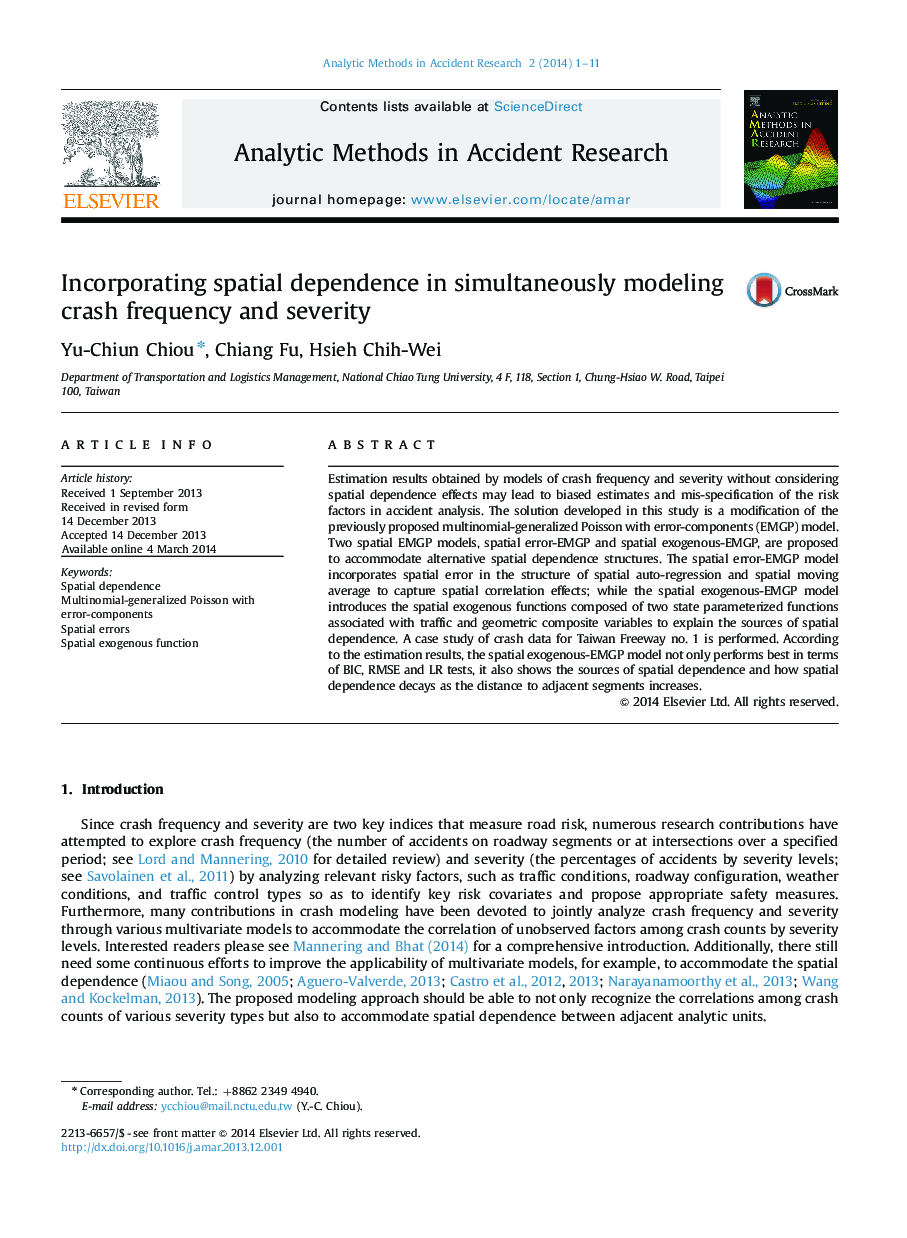| Article ID | Journal | Published Year | Pages | File Type |
|---|---|---|---|---|
| 1104509 | Analytic Methods in Accident Research | 2014 | 11 Pages |
•Spatial dependence may lead to biased estimation results of crash models.•Two spatial EMGP (multinomial-generalized Poisson with error-components) models, spatial error-EMGP and spatial exogenous-EMGP, are proposed and compared.•The former incorporates spatial error in the structure of spatial auto-regression and moving average.•The latter introduces the spatial exogenous functions composed of traffic and geometric composite variables to explain the sources of spatial dependence.•A case study shows that the spatial exogenous-EMGP model performs better.
Estimation results obtained by models of crash frequency and severity without considering spatial dependence effects may lead to biased estimates and mis-specification of the risk factors in accident analysis. The solution developed in this study is a modification of the previously proposed multinomial-generalized Poisson with error-components (EMGP) model. Two spatial EMGP models, spatial error-EMGP and spatial exogenous-EMGP, are proposed to accommodate alternative spatial dependence structures. The spatial error-EMGP model incorporates spatial error in the structure of spatial auto-regression and spatial moving average to capture spatial correlation effects; while the spatial exogenous-EMGP model introduces the spatial exogenous functions composed of two state parameterized functions associated with traffic and geometric composite variables to explain the sources of spatial dependence. A case study of crash data for Taiwan Freeway no. 1 is performed. According to the estimation results, the spatial exogenous-EMGP model not only performs best in terms of BIC, RMSE and LR tests, it also shows the sources of spatial dependence and how spatial dependence decays as the distance to adjacent segments increases.
